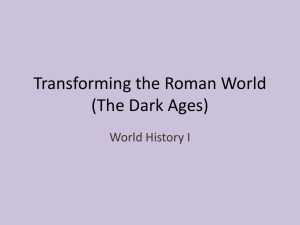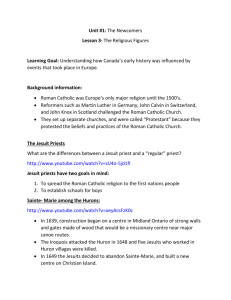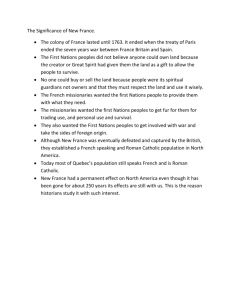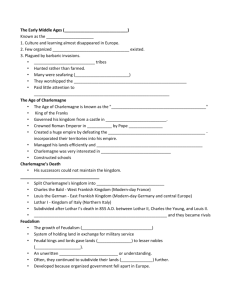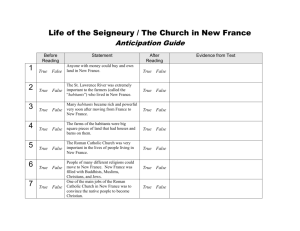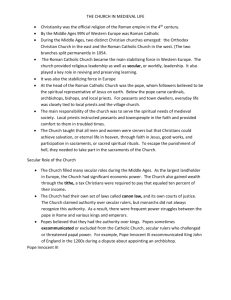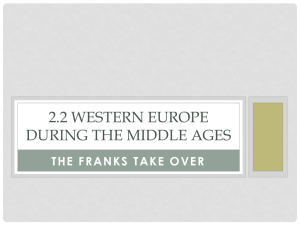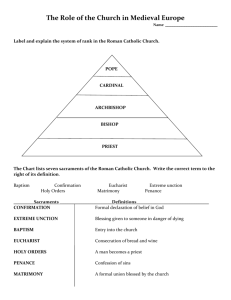Middle Ages: The Roman Catholic Church
advertisement
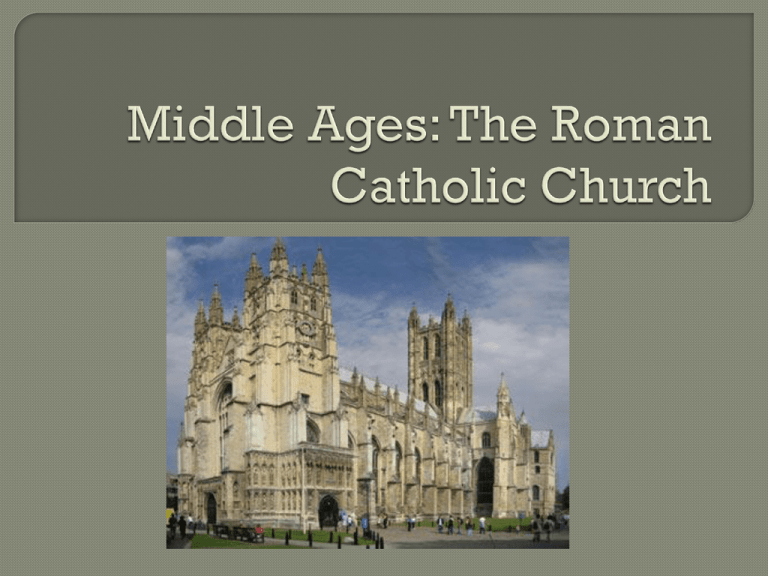
1. How was the Roman Catholic Church a powerful force during the Middle Ages? 2. Analyze the power of the Church with feudalism. Students will be able to evaluate the role of the Roman Catholic Church in Medieval Europe. 1. When Europe divided into small independent feudal states, the Roman Catholic Church became the single unifying force on the continent. 2. The Catholic Church played a powerful role in nearly everyone’s social and personal life. 3. Most Europeans were baptized, married, and buried by Catholic priests. 1. Throughout Western Europe in medieval times, each community was centered around a church. 2. The church offered religious services, established orphanages, and helped care for the poor, sick, and elderly. 3. They also hosted feasts, festivals, and other celebrations. 1. As communities grew, their members often donated money and labor to build new and larger churches. 2. These cathedrals were built to honor God. 3. Since most people could not read and understand Latin, the language of the Church– the shape and pictures of cathedrals taught people. 1. Monks were men who devoted their time to praying, studying, and copying and decorating holy books by hand. 2. They also preserved the works of the ancient Greeks and Romans. 3. The Church founded Europe’s first universities. 4. Monks lived in communities called monasteries – they became important centers of learning in medieval society. 1. Women who served the Church were called nuns. 2. In the Middle Ages, it was common for a woman to become a nun after her husband died. 3. Nuns prayed, sewed, taught young girls, cared for the poor, and also copied and decorated books. 4. They lived in secluded communities called convents. The church also held great political power. If a nobleman refused to obey the commands of the Church, the pope might punish him with excommunication, which kept him from Church activities. All of the churches on his land would be closed, and neither he nor his family, nor anyone within his territory could be baptized, married, or buried with the Church’s blessing. 1. Among the most famous military leaders was the Frankish (Germanic) King Charlemagne, or Charles the Great. 2. He increased the size of his kingdom and worked to improve life for those who lived there. 3. News of Charlemagne’s accomplishments spread to Rome. 4. Although the old empire was gone, Rome was now the center of the Roman Catholic Church (Christian Church). 5. Pope Leo III recognized that joining forces with Charlemagne might bring greater power to the Church. 6. In 800 A.D., Pope Leo III crowned Charlemagne as the new Holy Roman Emperor. The inquisition was a court set up by the Roman Catholic Church to investigate heresy and punish heretics Heresy was a serious crime of the Middle Ages in which a person held beliefs that the Church felt were wrong. Heretics, people guilty of heresy, were excommunicated. Jewish communities lived under discrimination and persecution in Europe. They were forbidden to won land. They could work only in certain professions, such as banking. Christians often blamed Jews when disease or natural disasters struck. Yet Jewish communities remained intact and preserved their traditions. Scholars continued to make contributions to learning for all Europeans. 1. In 1095 A.D., Pope Urban II called for a crusade, or a military expedition, to reclaim Christian control of the Holy Land from Muslim Turks. 2. The empire of the Turks included Palestine, part of the Holy Land, where Christ was born. 1. Several crusades between 1096 and 1272 failed to win the Holy Land. 2. They succeeded in: reopening the old trade routes, decreasing lords power and their fighting, increased kings power, making better boats and maps, and re-introduced the Greek and Roman knowledge.


